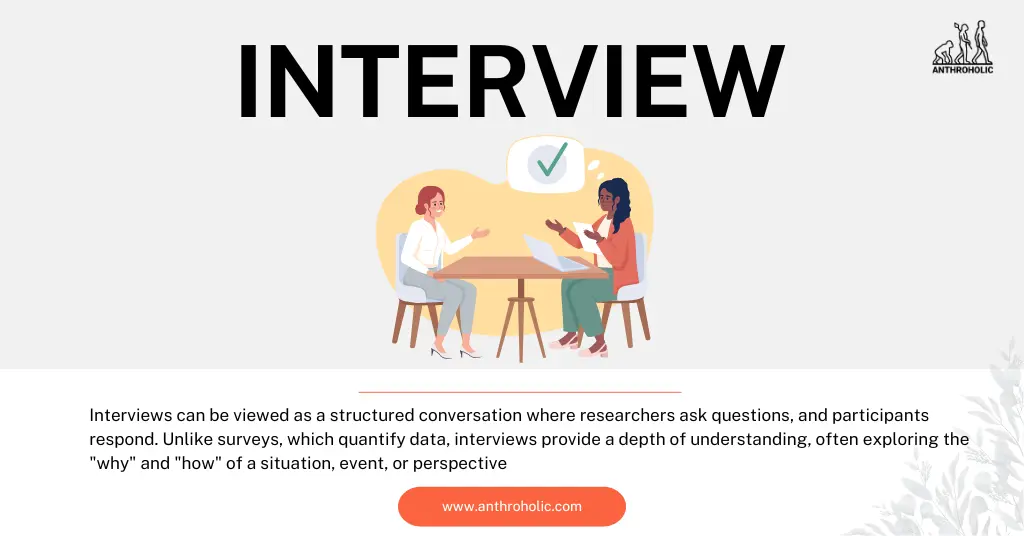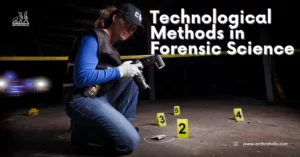AI Answer Evaluation Platform Live Now. Try Free Answer Evaluation Now
Interview
Interviews represent a cornerstone of qualitative research methodologies and function as one of the most valuable tools for gathering comprehensive, contextual data. They offer an effective means to understand participants’ experiences and perspectives in a way surveys or observational methods can’t match [1]. This article will explore the value of interviews as a data collection tool, their types, advantages and disadvantages, and how to conduct an effective interview.

Understanding the Role of Interviews in Data Collection
Interviews can be viewed as a structured conversation where researchers ask questions, and participants respond. Unlike surveys, which quantify data, interviews provide a depth of understanding, often exploring the “why” and “how” of a situation, event, or perspective [2].
Types of Interviews
There are three primary types of interviews employed in research:
- Structured Interviews: Researchers ask a standard set of questions in the same order, allowing for a more straightforward comparison between responses.
- Semi-Structured Interviews: Researchers have a set of pre-determined questions but can adapt their line of questioning based on participants’ responses.
- Unstructured Interviews: These are more conversational and flexible, allowing researchers to explore emergent themes more deeply [3].
| Interview Type | Standardized Questions | Flexibility | Comparison Between Responses |
|---|---|---|---|
| Structured | Yes | Low | High |
| Semi-Structured | Partial | Medium | Medium |
| Unstructured | No | High | Low |
Advantages of Interviews as a Data Collection Tool
Interviews offer several advantages for data collection:
- They can provide in-depth data, allowing for a comprehensive understanding of participants’ experiences, motivations, and perceptions.
- Interviews enable researchers to clarify responses or ask follow-up questions for further detail [4].
- They facilitate the collection of nuanced and emotional data that may not be captured through other methods [4].
Limitations of Interviews as a Data Collection Tool
Despite their strengths, interviews also come with limitations:
- They can be time-consuming and costly, especially when the research involves a large sample size.
- The quality of data largely depends on the interviewer’s skills and rapport with the interviewee.
- The data collected is often subjective and can be influenced by the interviewer’s biases [5].
Conducting Effective Interviews
To conduct an effective interview, follow these steps:
- Design the Interview: Decide on the type of interview and develop your questions. Keep questions clear, open-ended, and non-leading.
- Identify Participants: Choose participants who can provide relevant, rich, and detailed information for your research.
- Conduct the Interview: Build rapport with the interviewee, ask your questions, and provide them with the opportunity to ask their own.
- Analyzing Data: Transcribe the interview, code the data, and look for emerging patterns and themes [6].
Ethical Considerations in Conducting Interviews
Adherence to ethical guidelines is pivotal in ensuring the integrity of interview-based research. The key ethical considerations include:
- Informed Consent: Participants should be provided with comprehensive information about the study’s purpose, methods, and potential risks and benefits. They should be aware that participation is voluntary and they can withdraw at any point [7].
- Privacy and Confidentiality: Researchers should ensure participants’ identities are protected and data is stored securely to maintain confidentiality.
- Respect for Participants: Researchers should always treat participants with respect and sensitivity, particularly when discussing potentially distressing topics [8].
Adapting Interviews for Different Research Contexts
Different research contexts require different approaches to conducting interviews. Here are some considerations for varying contexts:
- Remote Interviews: Remote interviews conducted via phone or video conferencing can be convenient and cost-effective. However, researchers may miss non-verbal cues that provide valuable context [9].
- Group Interviews: Group interviews, or focus groups, can generate a broad range of views and stimulate dynamic discussion. However, they can also be challenging to manage and may be influenced by group dynamics [10].
- Cultural Considerations: Researchers should take cultural differences into account, such as norms around communication styles, to ensure questions are understood and answered accurately [11].
Interviews in the Digital Age
In the digital age, new technologies can assist in conducting and analyzing interviews. Digital recording devices provide clear, accurate records of interviews. Software can aid in transcription and data analysis, identifying patterns and themes more efficiently than manual methods [12].
Conclusion
While interviews require significant time and skill to conduct effectively, they offer a depth of understanding that many other data collection methods cannot provide. By allowing researchers to delve into participants’ experiences and perspectives, interviews can be a powerful tool for gaining insights into complex issues and phenomena.
References
[1] Brinkmann, S. (2013). Qualitative Interviewing. Oxford University Press.
[2] Boyce, C., & Neale, P. (2006). Conducting in-depth interviews: A guide for designing and conducting in-depth interviews.
[3] DiCicco‐Bloom, B., & Crabtree, B. F. (2006). The qualitative research interview. Medical education, 40(4), 314-321.
[4] Jamshed, S. (2014). Qualitative research method-interviewing and observation. Journal of basic and clinical pharmacy, 5(4), 87.
[5] Kvale, S. (2007). Doing interviews. Sage.
[6] Bryman, A., & Bell, E. (2015). Business research methods. Oxford University Press, USA.
[7] Mertens, D. M., & Ginsberg, P. E. (2009). The handbook of social research ethics. Sage.
[8] Flick, U. (2009). An introduction to qualitative research. Sage.
[9] Deakin, H., & Wakefield, K. (2014). Skype interviewing: reflections of two PhD researchers. Qualitative research, 14(5), 603-616.
[10] Kitzinger, J. (1995). Qualitative research. Introducing focus groups. Bmj, 311(7000), 299-302.
[11] Liamputtong, P. (2010). Cross-cultural research and qualitative inquiry. Turkish Online Journal of Qualitative Inquiry, 1(1), 16-29.
[12] Paulus, T., Lester, J., & Dempster, P. (2013). Digital tools for qualitative research. Sage.




